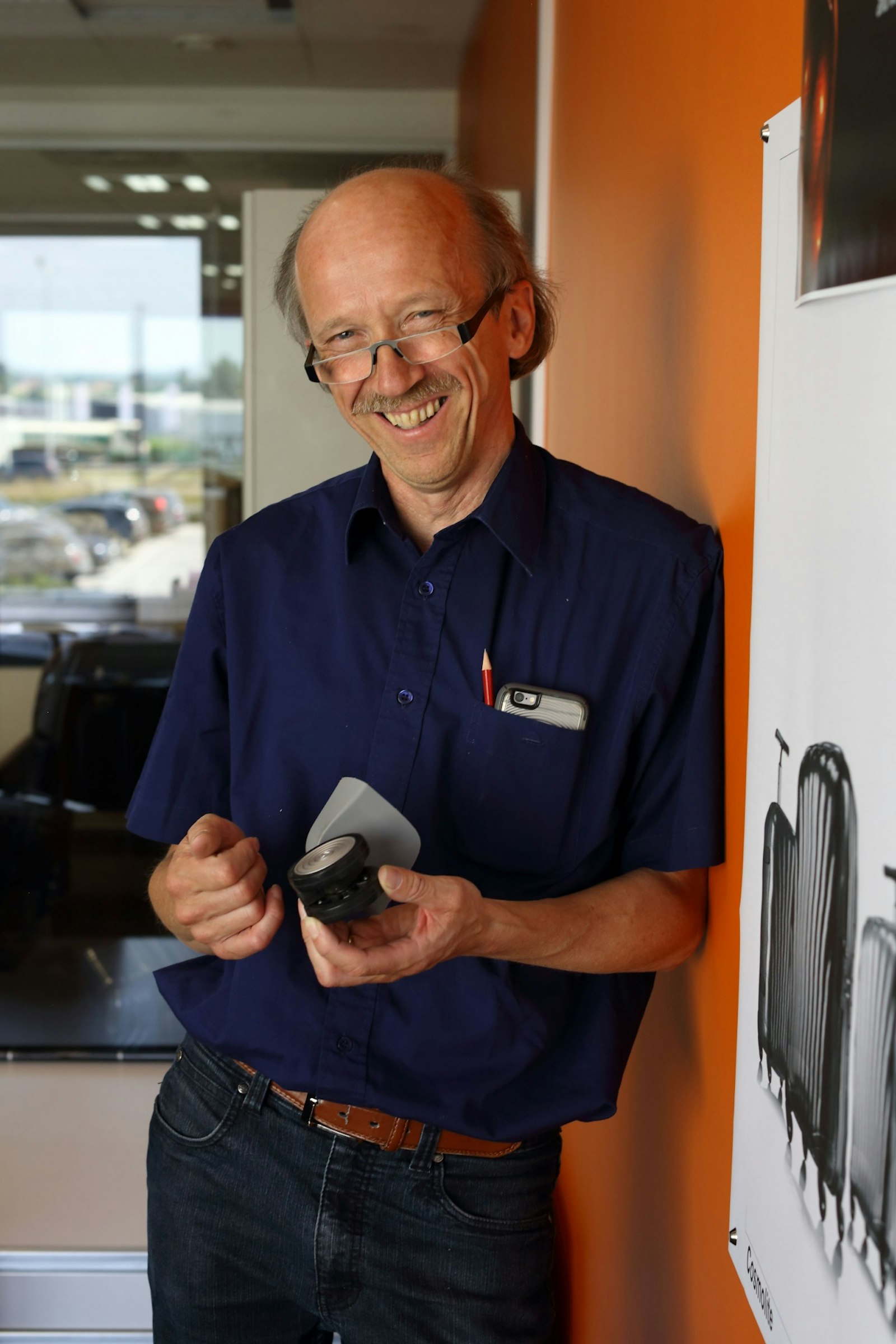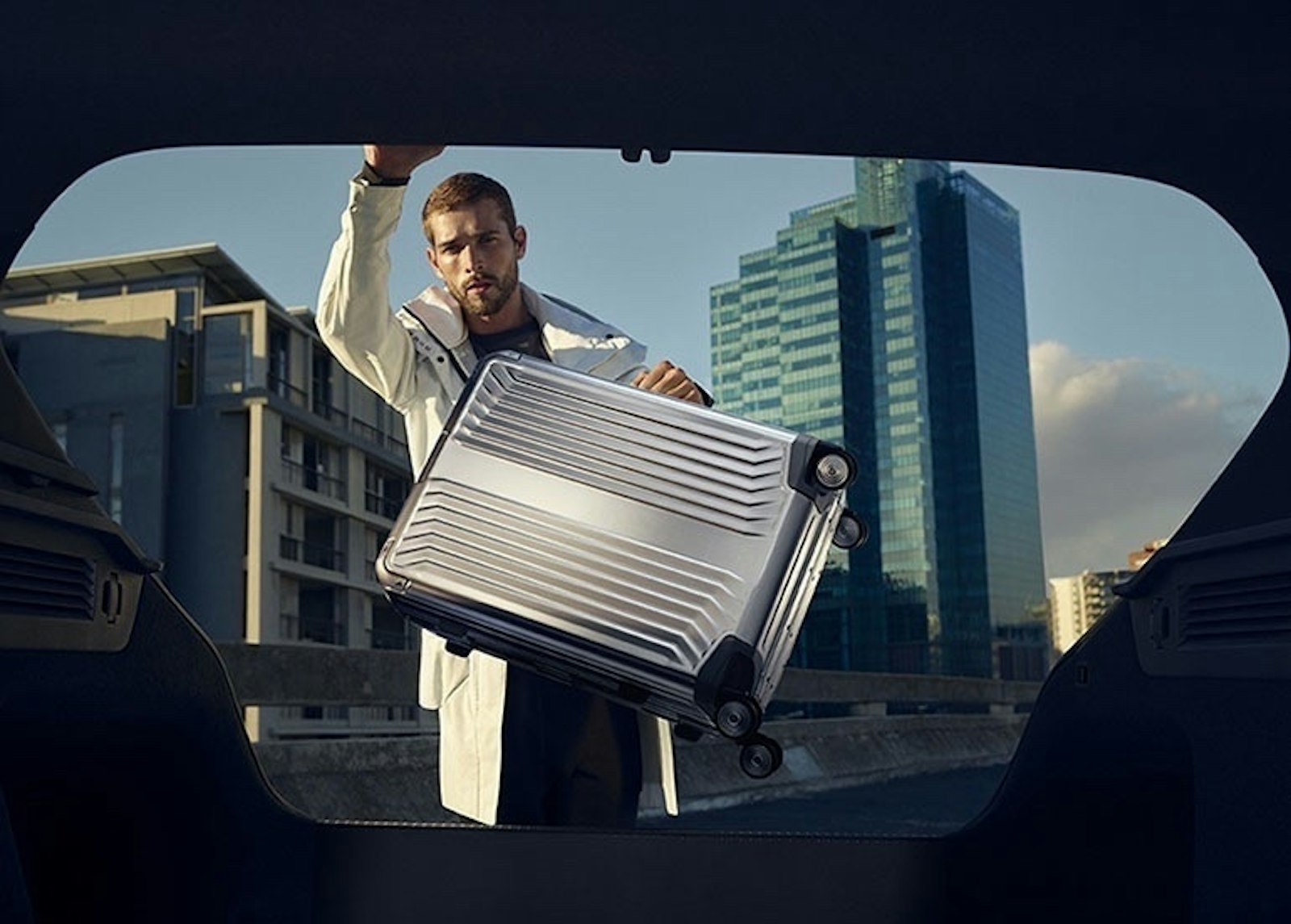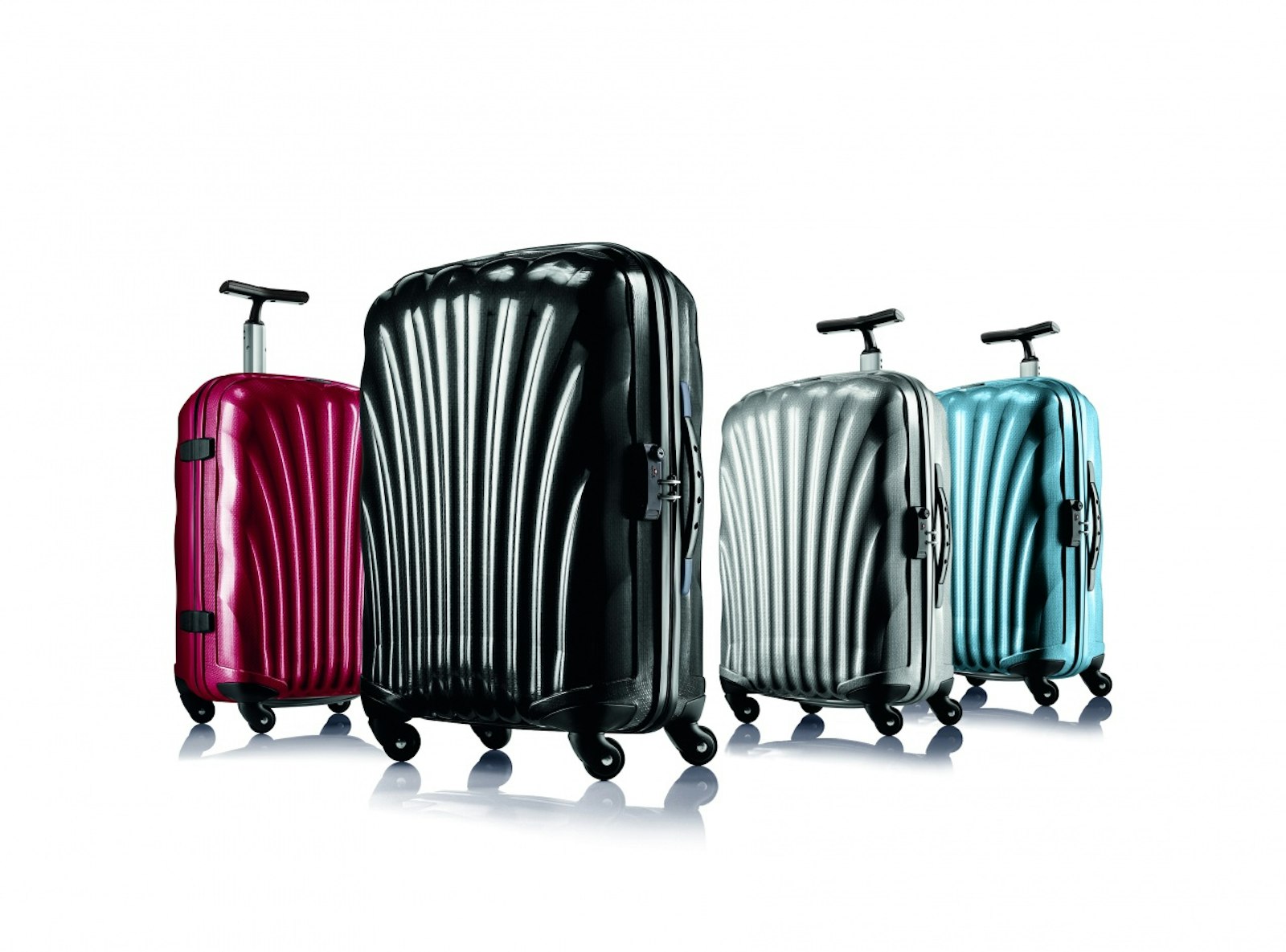de Velde
Erik Sijmons (Samsonite)
Although his name might not immediately ring a bell for many people, his designs undoubtedly do: Cosmolite by Erik Sijmons is one of the most iconic products ever designed for Samsonite
Erik Sijmons (born 1959) has been working for Samsonite since 1986. This American company was founded in 1910 and has had its European headquarters in Oudenaarde since 1965. Apart from his early years as a designer for Verhaert Design, IPA Automotive Design and Development and Don-Bar Design, he has spent his entire professional life designing for Samsonite. And yet, after all these years, his passion for designing luggage has in no way slowed down. “More than ever before, the ecological reality is forcing the travel industry - and by extension solutions for luggage - to change. As a company, we want to make a difference with innovative products. The fact that our founder Jesse Shwayder was already using words such as sustainability and lightweight back in 1940 shows that these values are engrained into Samsonite’s DNA. His vision still inspires me to keep striving for the perfect suitcase, with passion and drive. Although I consider myself a generalist, I particularly enjoy designing suitcases because they evoke exciting stories and wonderful memories of travel for almost everyone,” Erik Sijmons says. Erik Sijmons started at Samsonite, designing components, moving on to creating complete suitcases over the years. All in all, 34 of his designs have been put on the market. “In 1990, I designed the Handy Case, a more attractive version of the beauty case, and in 1994 the Ziplite, the first hard case with a zip closure and of which the shells are made from a combination of polypropylene and woven polypropylene. That was already a pioneer in the world of lightweight luggage. The first aluminium suitcases, Xylem, followed in 2000, including the special ‘money case’ that James Bond memorably held onto while jumping from the eighth floor in the film The World Is Not Enough.” “The first hardside spinner or vertical four-wheeled suitcase saw the light of day in 2002. Shortly after, in 2006, that style was expanded with a suitcase called Vintage, which was inspired by Samsonite’s Streamlite Heritage Collection. In 2008, Scooter Luggage was the first suitcase with which you could also transport yourself. That was followed by Cosmolite. In 2018, Samsonite launched a new aluminium collection, Lite Box Alu, which was followed in 2019 by Magnum, Samsonite’s lightest polypropylene suitcase with three-point closure,” Erik Sijmons continues. “As an in-house designer, you are at the heart of the company’s everyday reality. For example, with Neopulse (2015), we designed a polycarbonate case that could be produced once again in Europe. The Made in Europe label, in combination with the design, made Neopulse an instant commercial success. As an in-house designer, it is easier to take in the whole picture and bear responsibility for taking the technical aspects of production into consideration as well, and, in doing so, come up with an integrated solution.”
Protective cocoon
Of course Cosmolite, and all the collections derived from it, is and will remain Erik Sijmons’ magnum opus. It has won him the most prestigious prizes all over the world. “In first instance, the idea for Cosmolite was born out of frustration, so searching for the solution between shape, lightweight , durability and material became the challenge. We spent five years working on this product in close cooperation with material specialists. Together with the R&D team, I also pushed myself to the limit. The CEO was confident in the ability to bring the product to market together with the marketing division,” Erik Sijmons recalls. “At that time, nobody could possibly have imagined that it would be such a commercial success. After a dozen years, this collection is still one of Samsonite’s lightest and best-selling models in this category. A Cosmolite is sold somewhere on the planet every two minutes. This suitcase strengthened the brand’s identity and helped the company market a new product category under the name of Curv® technology. It is therefore clear that innovation and design really did make the difference. ”What makes Cosmolite so special is the use of Curv®, a self-reinforcing polypropylene composite with a woven polypropylene as a fibre and a polypropylene film as a resin. This also makes the cases extremely resistant, meaning that they can absorb shocks well, even at temperatures as low as -12°C, and have a long service life. What’s more, they are very light. It is with these features that they exceed the expectations of the market. The advertising campaign of a suitcase that cannot be crushed between two typical yellow New York taxis is engraved in everyone’s memory. Erik Sijmons draws his inspiration for shapes from nature. “I derived my inspiration for the elegant shape from the seashell. It symbolises the lasting durability of the shape and the material, and forms a protective cocoon for the contents, as if it contains a precious pearl. At the same time, those ribs of the shell ensure that - despite the thinness of the material - the case is still adequately strong as a whole. The ribs also reduce the risk of scratches. Nature has also served as one of the greatest sources of inspiration for some of my other collections. After all, nature never creates anything that is ugly, and everything is always in balance. That said, I do follow trends in fashion, the digital world or the automotive sector, because they are often ground-breaking and futuristic.”
Outstanding observer
Erik Sijmons has been expanding Samsonite’s European design department in Oudenaarde since 2012. While two managers are now in charge of the day-to-day management, Erik Sijmons sets the course a long-term strategy. “This Lifetime Achievement Award gives me another extra boost to realise some of the things I have in my mind,” he says. “Everything around us is becoming more ‘smart’, and luggage is no exception. We are also coming up with concepts that support more hybrid forms of travel, including different modes of transport for example. Aside from that, we want to encourage consumers to travel sustainably through the services we offer, and are seeking materials that don’t need fossil fuels, such as biocomposites. ”Erik Sijmons continues: “I have a strong vision of what the suitcase of the future should look like, and this motivates me to keep on experimenting. I don’t like to be a follower; I want to be a trendsetter. Or, to put it in the words of Michelangelo: ‘The greatest danger for most of us is not that our aim is too high and we miss it, but that it is too low and we reach it’. ”For Erik Sijmons, this constant drive for innovation goes hand in hand with design. “When most people think of design, they think of styling and styling alone, but nothing could be further from the truth. Good design has to unleash emotions, make life easier for the consumer and change the world. A design has to be people-oriented: it must offer a solution for people’s unmet needs and be able to stimulate the imagination, which in turn attracts people to it. At the same time, this integrated product design must not only provide quality for a specific user; it must also contribute to the long-term well-being of all mankind and the world. The power of designers lies precisely in that ability to bring together all these factors, which combine science, technology and creative imagination. A designer has to be - above all - an outstanding observer,” Erik Sijmons says. “That’s why I chose not to become an architect, but to study product development at the Artesis University College in Antwerp. I saw it as a perfect extension of my studies in Mathematics and Science, and my passion for creativity which I explored during the weekends at the Academy in Sint-Niklaas. Moreover, I saw it as an opportunity to realise my childhood dream, which my uncles would occasionally have a good laugh about: to change the world and contribute to the well-being of mankind. Although I’m still very keen to continue working, I do feel that I have been successful so far. I am a happy person.”



